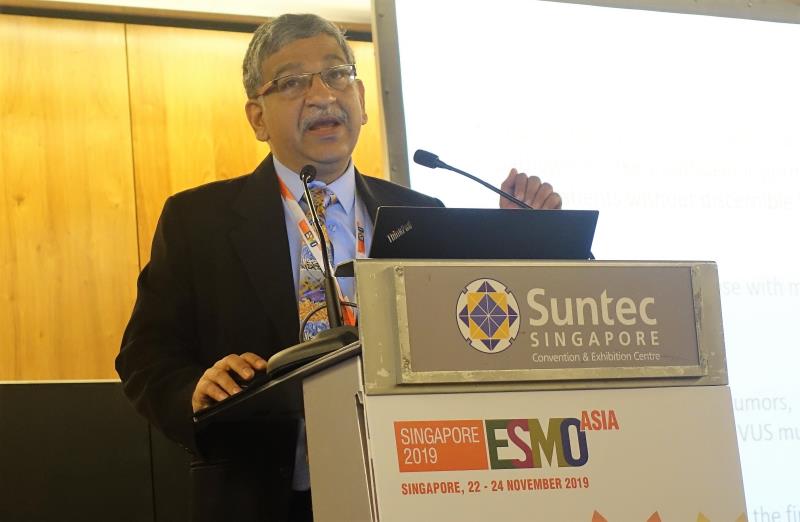
In India, nearly one in four unselected ovarian cancer patients present with germline pathogenic BRCA1/BRCA2 mutations, of whom 85 percent had no discernible family history of breast or ovarian cancer, according to a study presented at the recent 2019 Asia Congress of the European Society for Medical Oncology (ESMO Asia 2019).
In addition, 25 percent of those with serous histology tumours harbour a germline pathogenic or likely pathogenic BRCA1/BRCA2 or variants of uncertain significance (VUS).
“The worldwide reported prevalence of germline pathogenic BRCA1 and BRCA2 mutations in ovarian cancer patients is 17 percent (3–27 percent) and that of VUS is about 10 percent,” said Sudeep Gupta, medical oncologist at the Tata Memorial Hospital Centre in Mumbai, India. [J Clin Oncol 2012;30:2655-2663; Cancer Manag Res 2018;10:6505-6516]
Of the 239 patients included in the current study, 16 were newly diagnosed and treatment-naïve while 223 had a previous diagnosis of ovarian cancer and had received between 1–9 prior lines of therapy.
Sixty-one patients (25.5 percent, 95 percent confidence interval [CI], 20.12–31.54) presented with germline pathogenic or likely pathogenic BRCA1/BRCA2 mutations and 10 (4.2 percent, 95 percent CI, 2.02–7.54) with VUS. [ESMO Asia 2019, abstract 2260]
A total of 159 patients had serous histology tumours, of whom 48 (30.2 percent) had pathogenic or likely pathogenic germline BRCA1/BRCA2 mutations. The same finding was present in 16 of 74 (16.2 percent) patients with nonserous histology tumours.
Of note, nearly two-thirds (41 of 61; 67.1 percent) of patients with germline pathogenic or likely pathogenic BRCA1/BRCA2 mutation had no family history of breast or ovarian cancer.
“To our knowledge, this is the first study from India to report prevalence of germline BRCA1/BRCA2 mutations in unselected Indian patients with new or previously diagnosed ovarian cancer,” said Gupta.
In a previous study, Singh and colleagues analysed selected Indian patients and their relatives with hereditary breast and ovarian cancer (HBOC) and found a 25.5-percent rate of germline BRCA1/BRCA2. Moreover, they recommended the incorporation of a cost-effective and comprehensive multi-gene test to ensure widespread implementation of genetic screening in the clinical practice for HBOC. [Breast Cancer Res Treat 2018;170:189-196]
The present cross-sectional, multicentre, prospective, observational study sought to determine the prevalence of germline BRCA mutations at nine sites from different geographical regions across India which enrolled patients with new or previous diagnosis of ovarian, primary peritoneal or fallopian tube cancer.
Patients underwent blood testing using next-generation sequencing-based platform for germline BRCA. The calculated sample size for this study was 228, assuming 5-percent precision around an estimated point prevalence of 15.8 percent with a dropout rate of 10 percent.
BRCA1 and BRCA2 are tumour suppressor genes. Functional BRCA proteins are responsible for regulating cell growth and preventing abnormal cell division that potentially results in tumour development. [Crit Rev Oncol Hematol 2018;127:29-41; Mutat Res 2019;813:51-57]